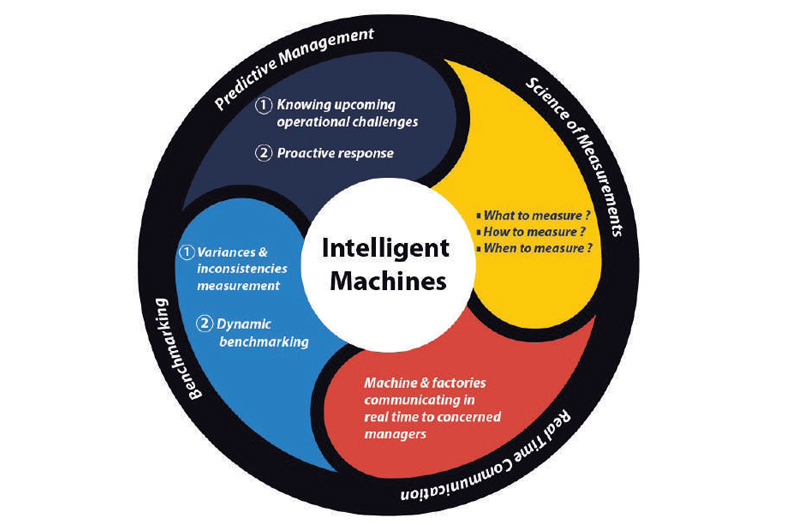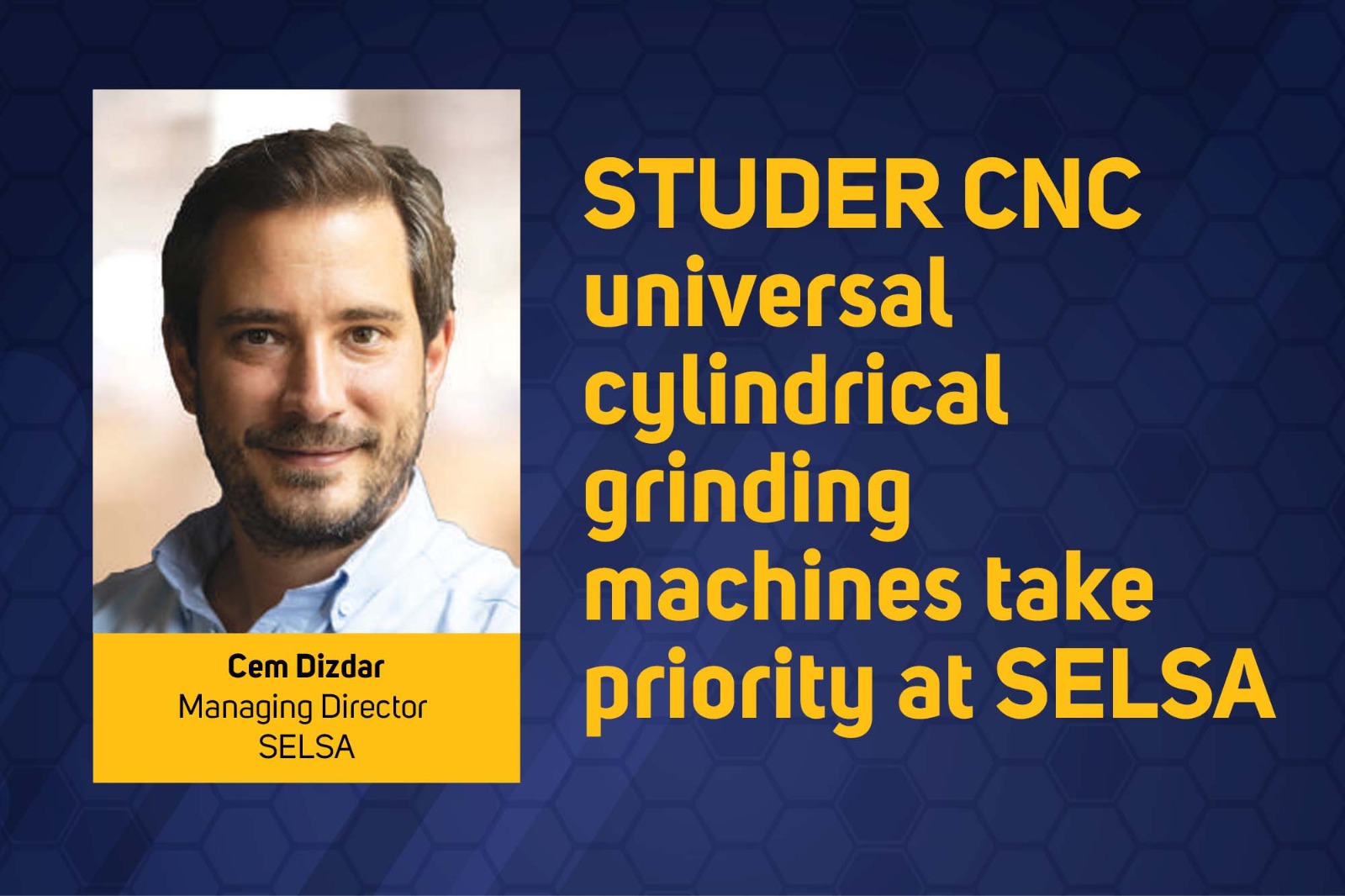Adding intelligence to CNC machines for better efficiency
By OEM Update Editorial January 11, 2019 2:44 pm IST
In an animated meeting in a leading component manufacturing company, the plan for 30 per cent capacity expansion is being discussed among various stakeholders including Chairman, President of Sales, President of Operation, CFO and other management cadre. The manufacturing facility is primarily machining shop with three, four and five axis machines to do various operations such as cutting, drilling, milling, grinding etc. Few of these machines are semi-automated while remaining are fully automated. The overall team is excited about the expansion plan which is based on the promise of a healthy order booking over next 2-3 years of horizon. At the same time, staying competitive is one of the serious concerns for the management in the given product category and market segment. While expansion is appearing inevitable and being accepted by the management, they are also insisting on the need to make operation more profitable.
Sudeep Patel, an old-time supervisor from the machine shop, also present in the meeting, however, changes the course of the discussion. He proposes the team to discover hidden capacity in the shop floor rather than blocking the capital in expansion project. His argument is that there are various measured or unmeasured inefficiencies leading to heavy loss in production capacity in the order of 25-30 per cent, if not more.
If achieved, this does not only free huge capital of the company over next 24-30 months but also will reduce the conversion cost per unit of production leading to an increase in profitability. This sounds ideal, certainly excites the Chairman, but is it possible? “We are already running the shop at more than 99 per cent efficiency”, says the Chairman. “Daily production report over last 9-12 months outlines extremely high utilisations of the plant with close to 100 per cent efficiency.”
Sudeep is clear in his mind and outlines following approach:
Understanding the science behind measurements of various performance KPIs
He takes example of production efficiency of the shop floor which is being reported approx. 99 per cent in the last 8-9 months.
Current method of computing production:
• Target given from planning department: 100 units per shift
• Actual production: 100 units per shift
• Production efficiency = Actual/planned = 100 per cent
According to Sandeep, the following method should be used:
• Installed capacity: 150 units per shift
• Internal baseline: 120 units per shift, a baseline which is formulated in last 8 years. This lowered baseline compared to installed capacity is attributed to various reasons such as losses due to changeover in tools, product changeovers, cleaning or setup time.
• Planned target :100 units, often planning target is further lowered and reason for which is attributed to challenges like non-availability of workers, materials or some unplanned breakdowns
• Sandeep’s outlines the basic economics and computes the real efficiency as
• 100/150 = 66 per cent which is starkly different than currently reported 100 per cent.
While the above example also leads to redefining various standards and benchmark, Sandeep has a different plan too. He remembers some of the extraordinary shifts or days when production was extremely high, way above the benchmark. Understanding those good shifts and replicating the learning across will have 12-15 per cent impact on capacity discovery. Also, continuous benchmark revision on shorter time interval will bring in greater improvement in the operation.
Real time notification and decision making
Most of the unwanted events on the shop floor like sudden surge in utilities consumption, drop in OEE in last 10 minutes, sudden deviation in process parameters etc. are never noticed or acted upon. Accumulation of such small deviation results into production, quality and cost compromises. Knowing, understanding and acting upon such events in real time will make a significant impact on overall economics of operation. Sometimes, it can impact the EBIDTA in the tune of 1-1.5 per cent.
Predictive management
Creating the capability to predict the productivity, quality and cost in the next few hours will help operation team to address potential reasons pro-actively and thus, eliminate most of the losses. This requires AI and MLS based tool to be integrated with machine control system and measure real time operating environment 360 degree.
Sandeep concludes his argument on these four interventions which will allow the company to not only discover hidden capacity without any capital investment but also improves overall EBIDTA with respect to most of the peer companies.
Intelligent system uses IoT, Artificial Intelligence, machine learning and data science as discipline to apply on the existing machines to make it more effective operationally and financially. Such technology can redefine the capacities of existing setup by at least 25-30 per cent, ultimately saving a huge capital investment. This system can be plugged with CNC, PLC, sensors or energy meters etc. to collect data and have holistic operational analytics in real time using cloud technology.
Such system [for example: Covacsis IPF product] has already been proven to reduce the variable cost of the operation on the shop floor in the tune of 10-12 per cent. Besides it is imperative for factories to adopt these technologies to keep itself relevant in the future of manufacturing.
Case study by:
Tarun Mishra
Founder- Covacsis Technologies
Cookie Consent
We use cookies to personalize your experience. By continuing to visit this website you agree to our Terms & Conditions, Privacy Policy and Cookie Policy.


















